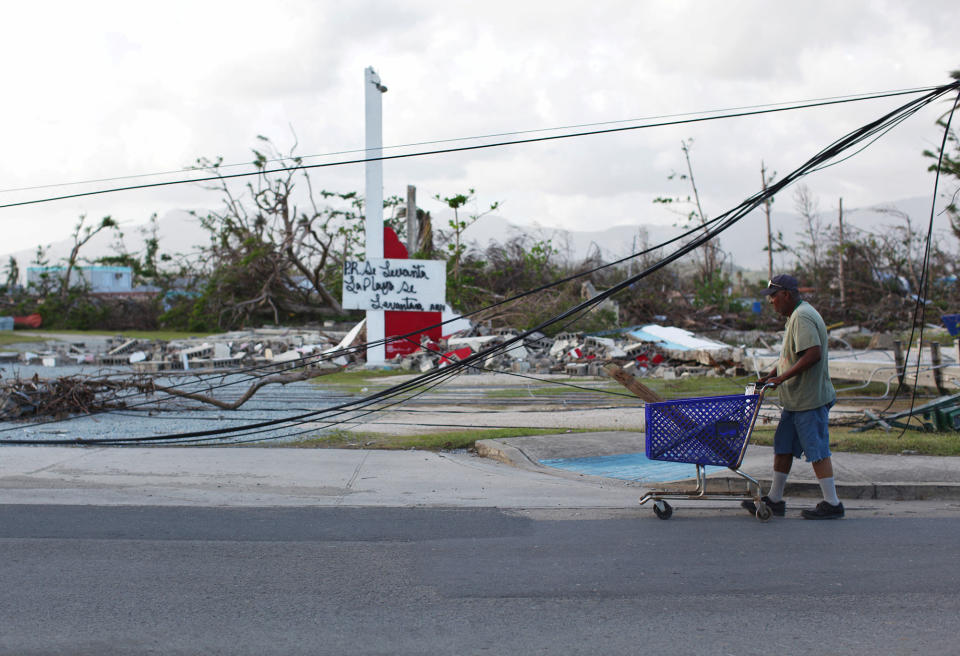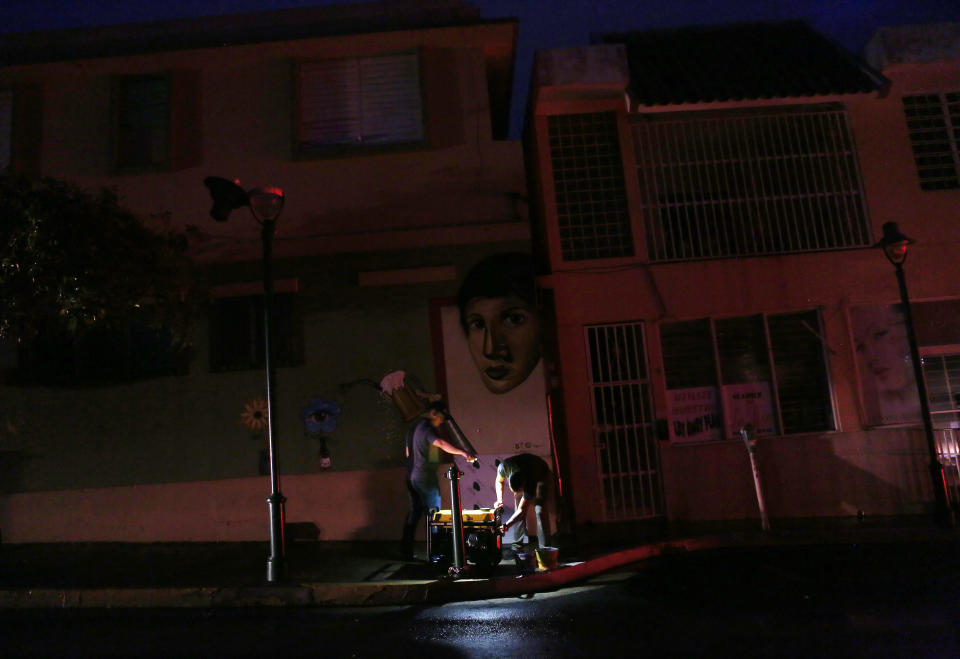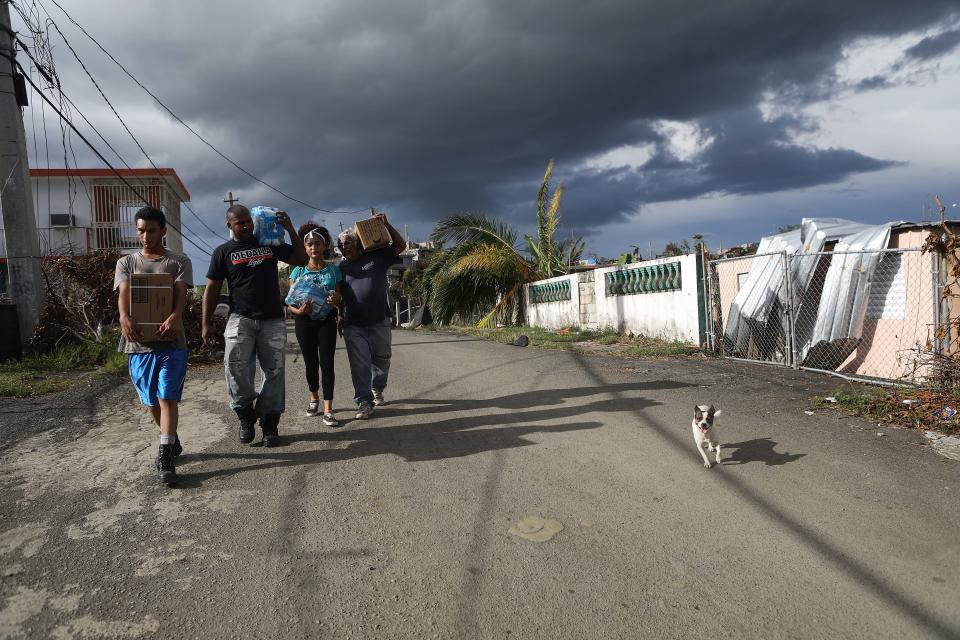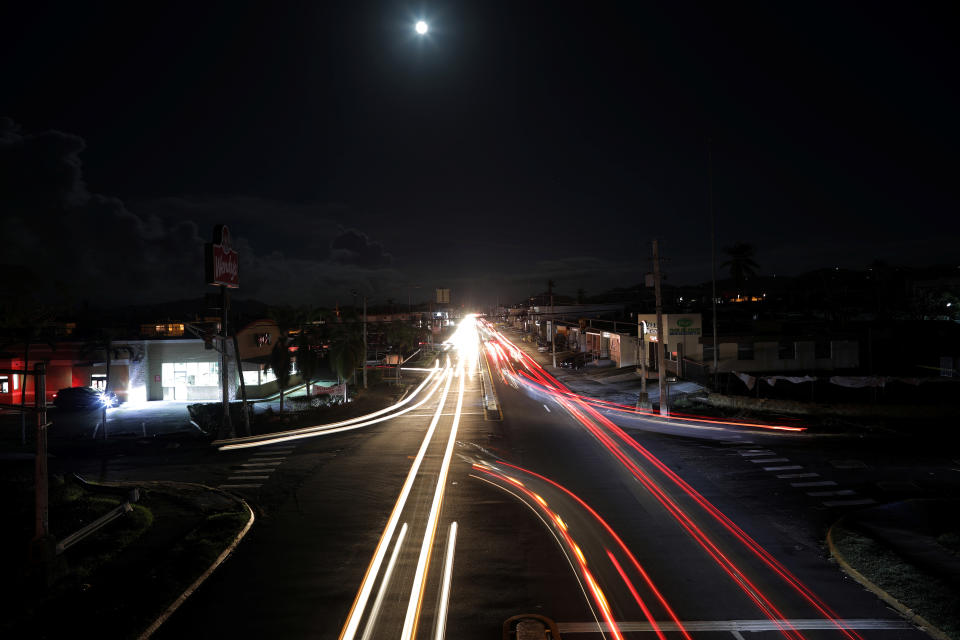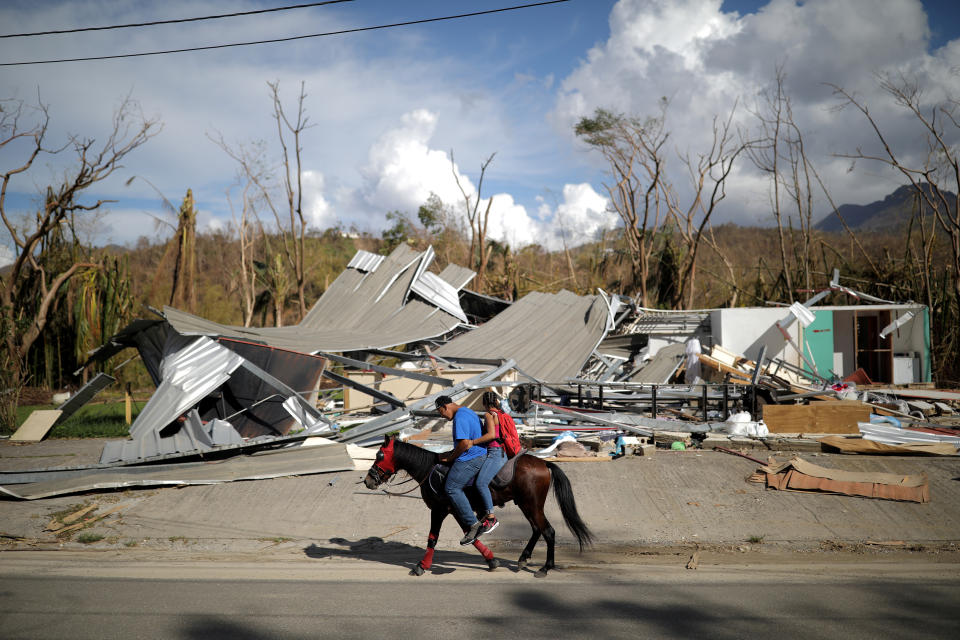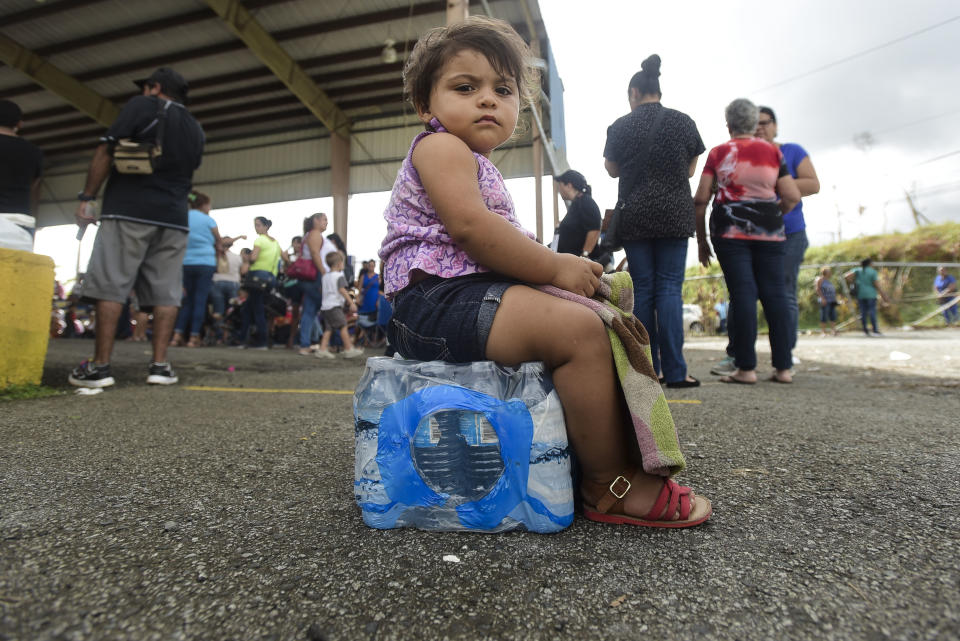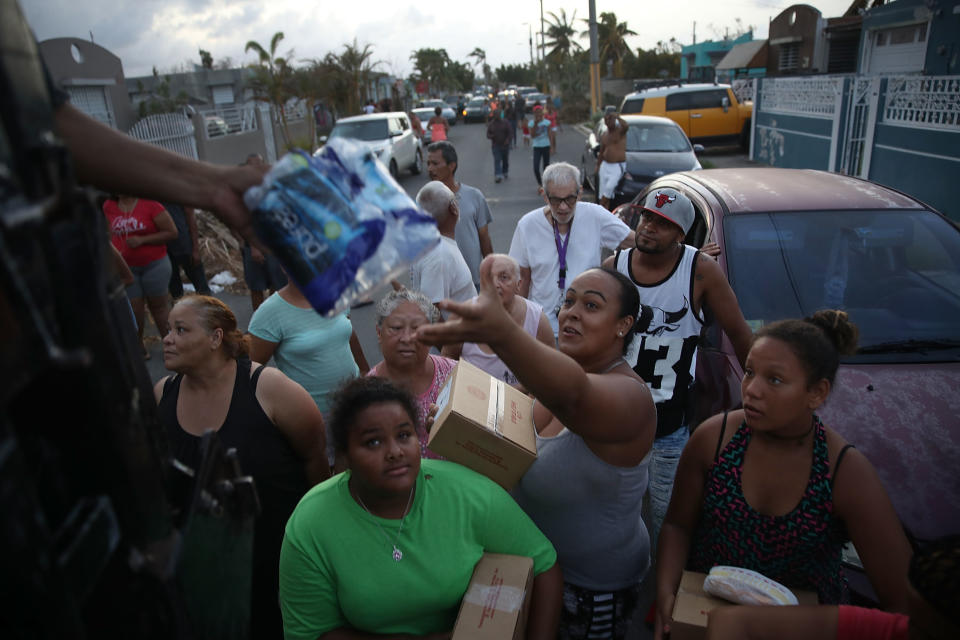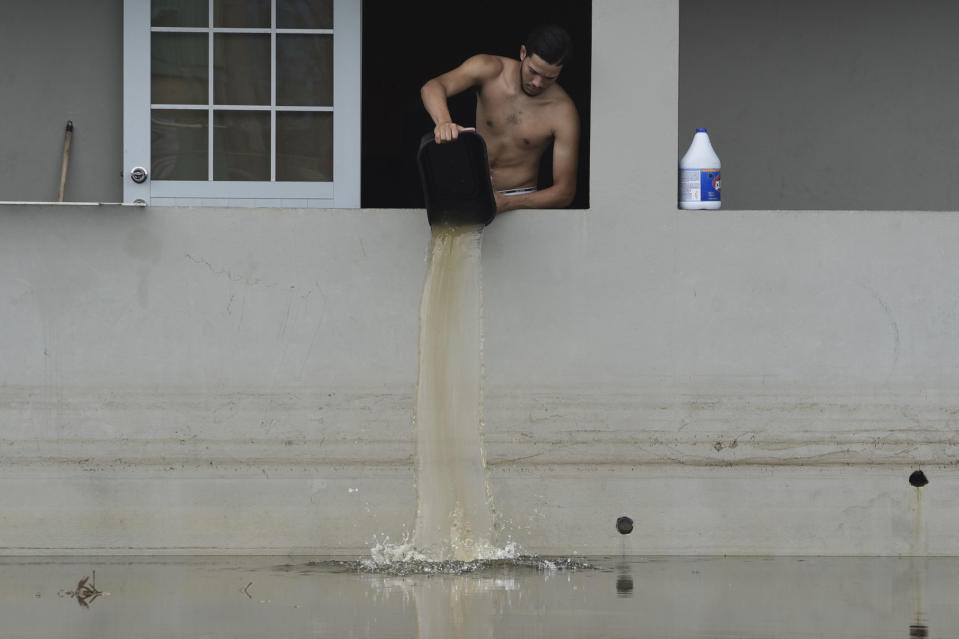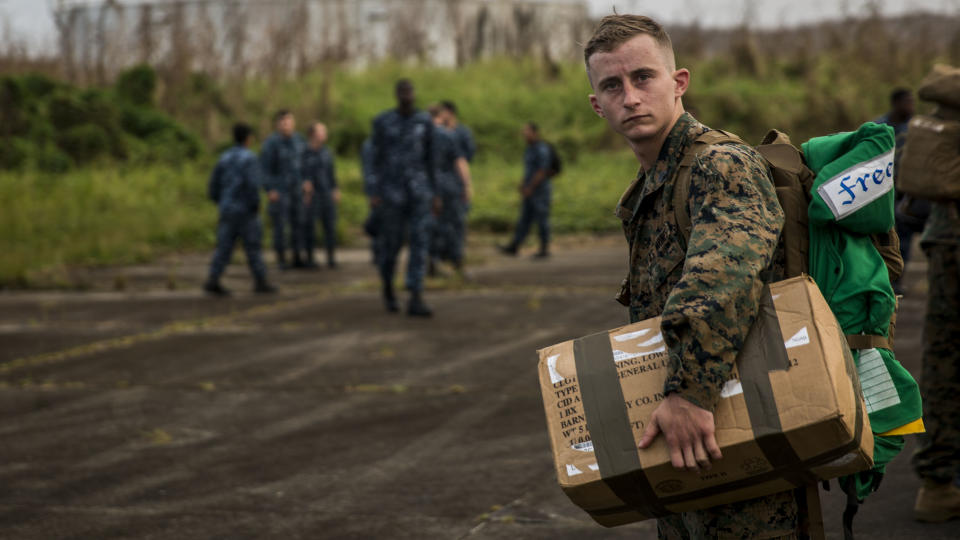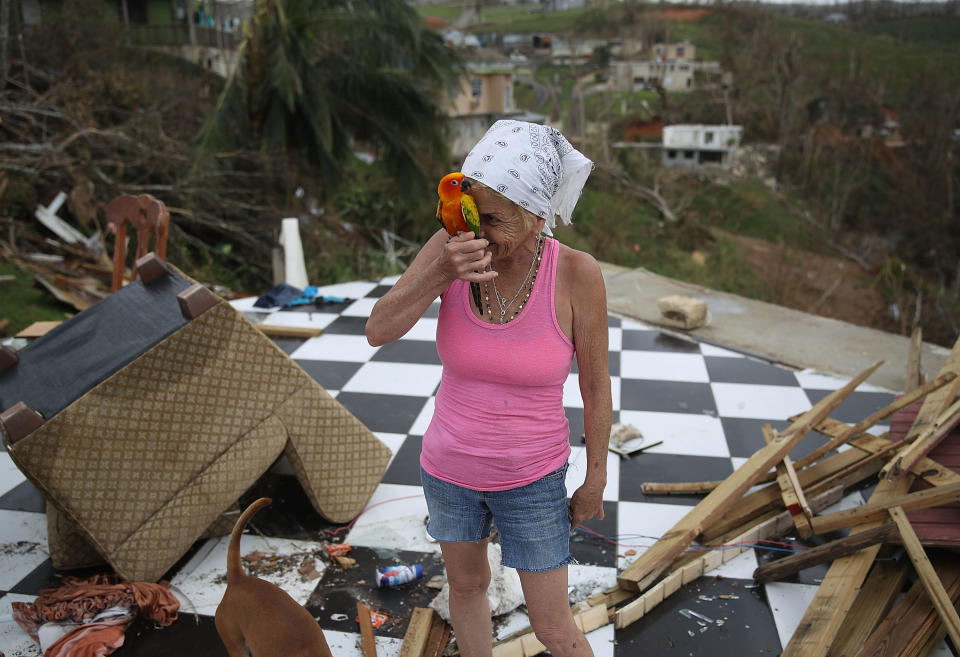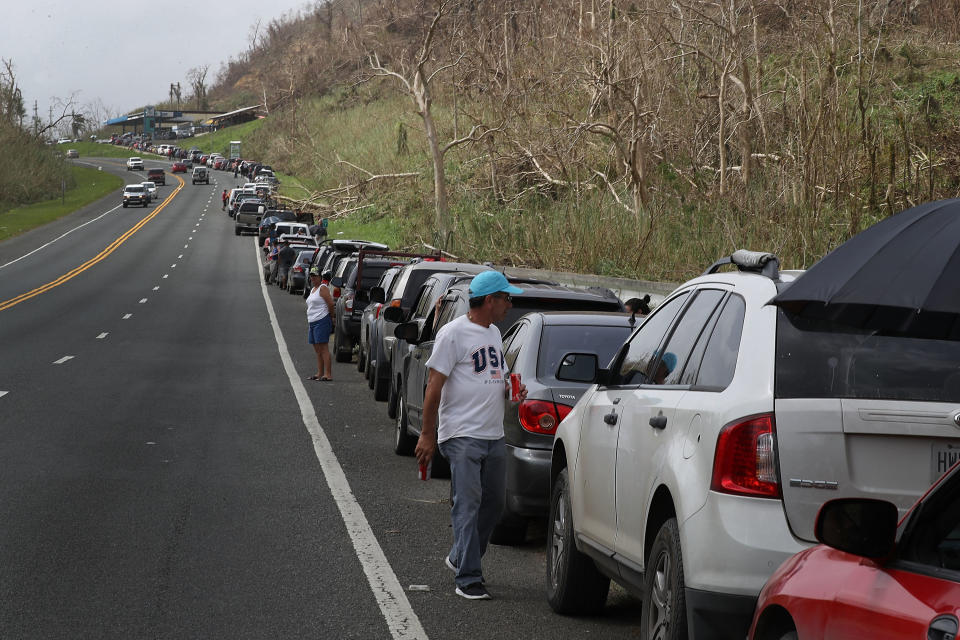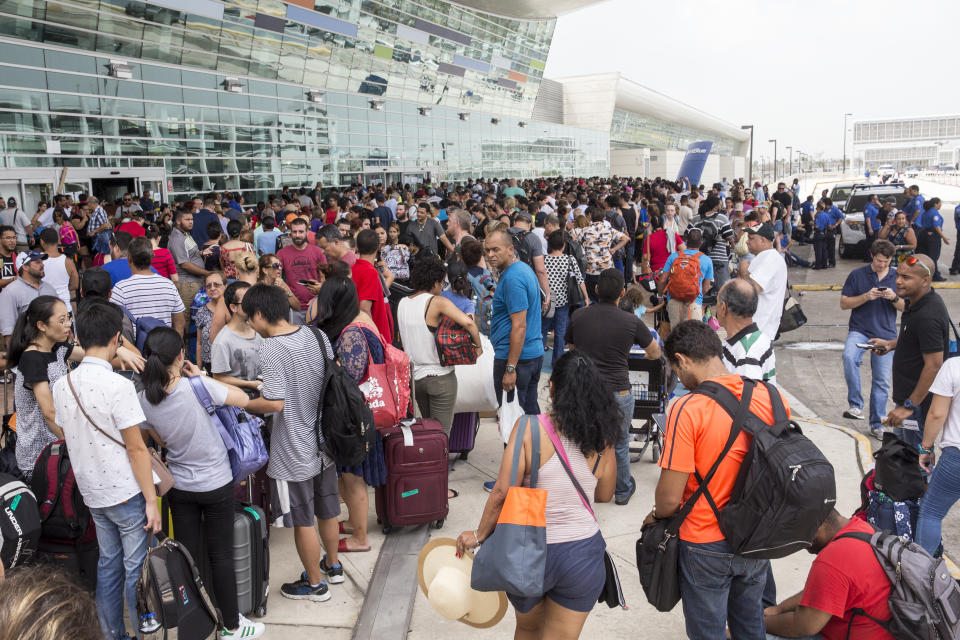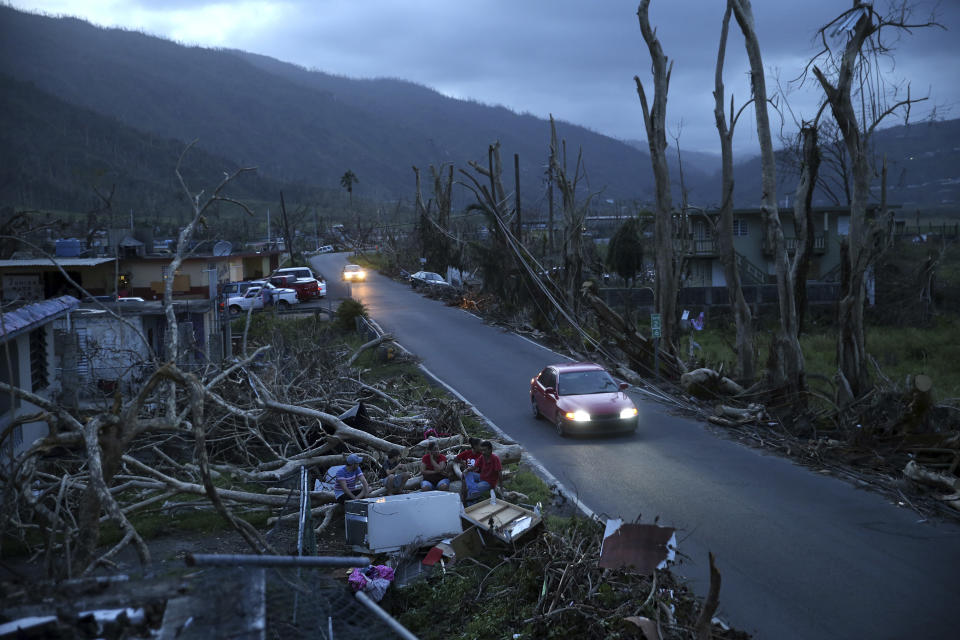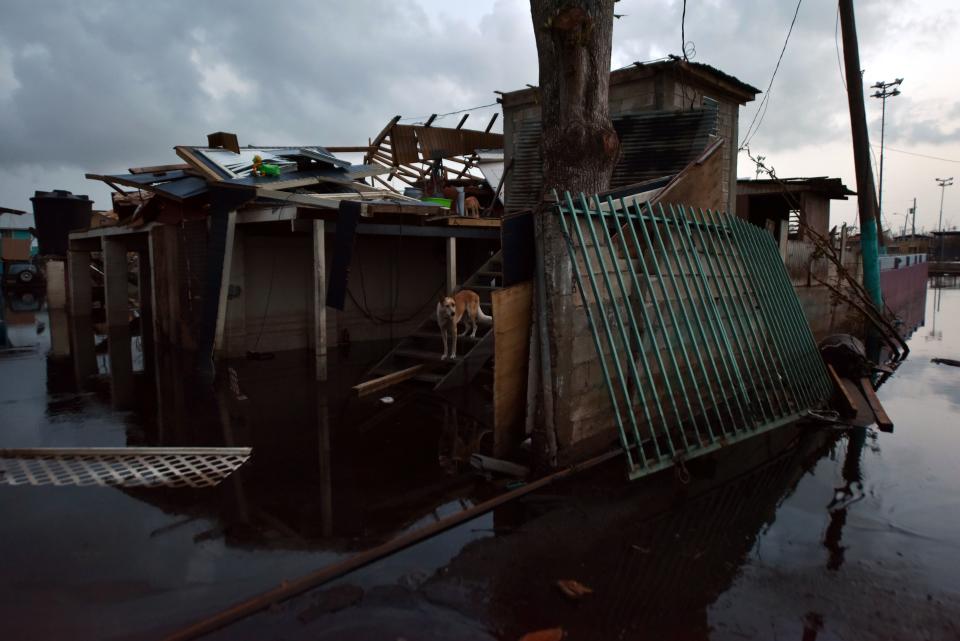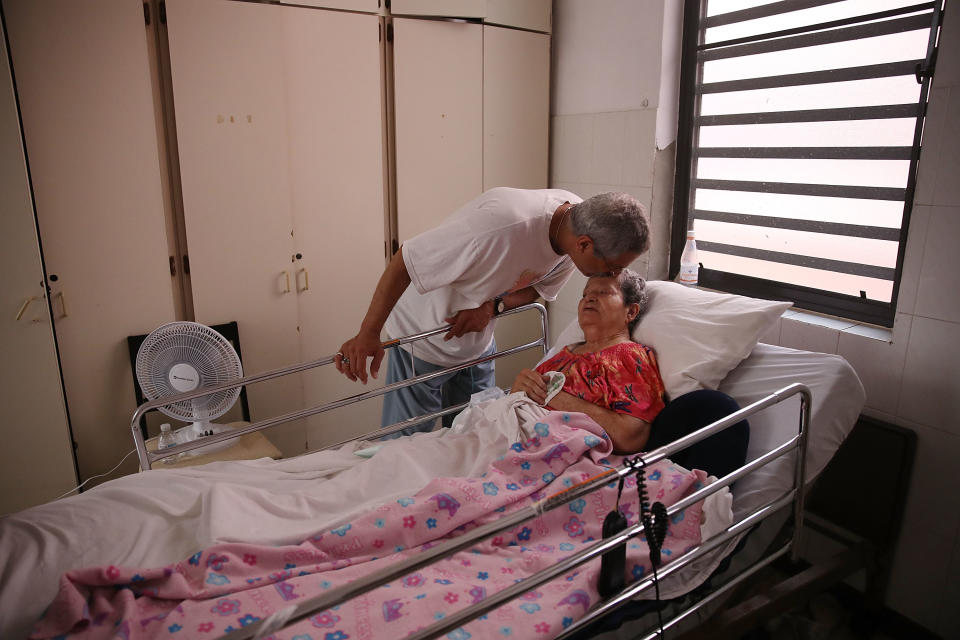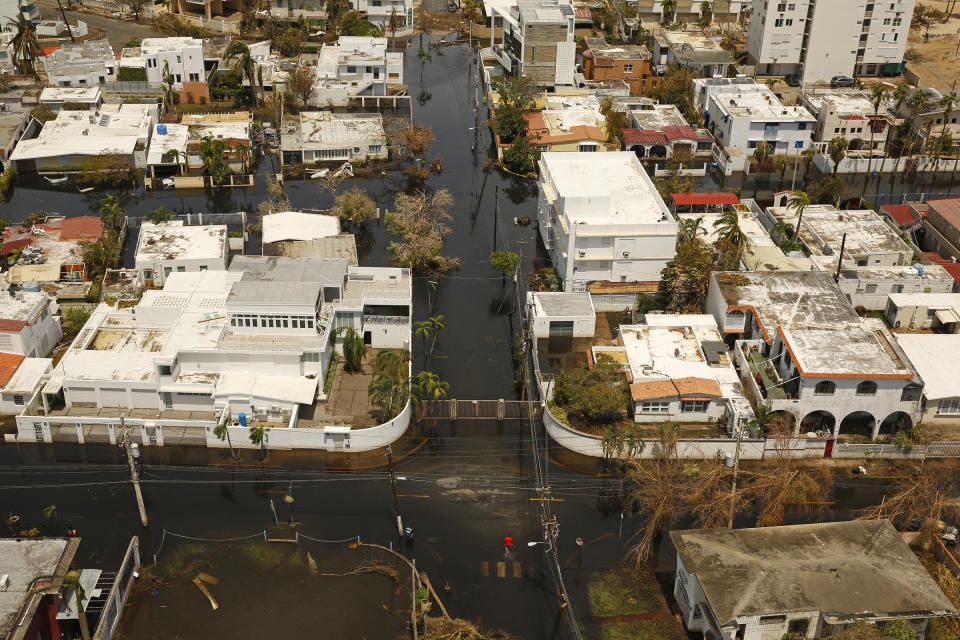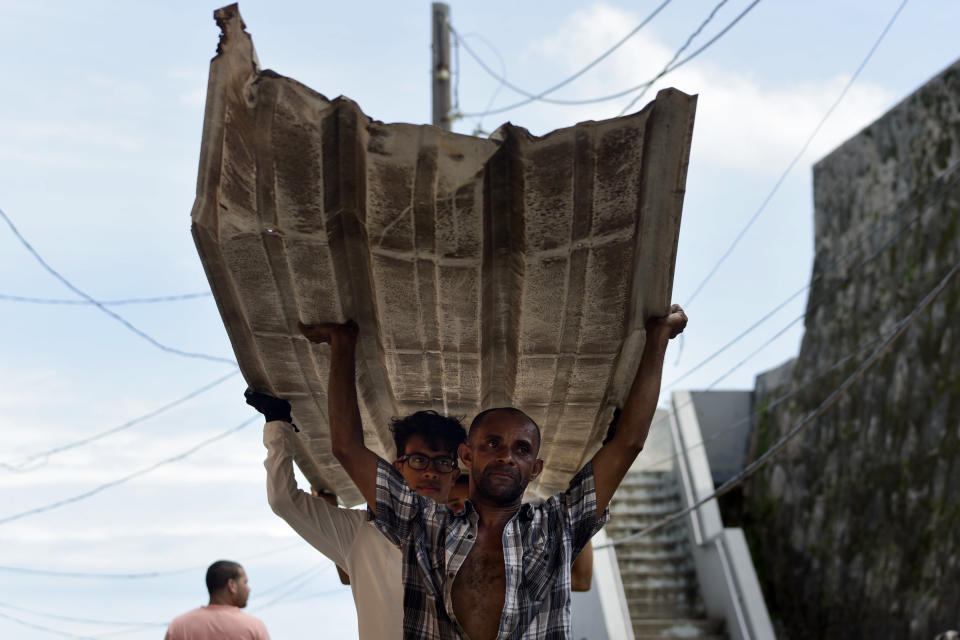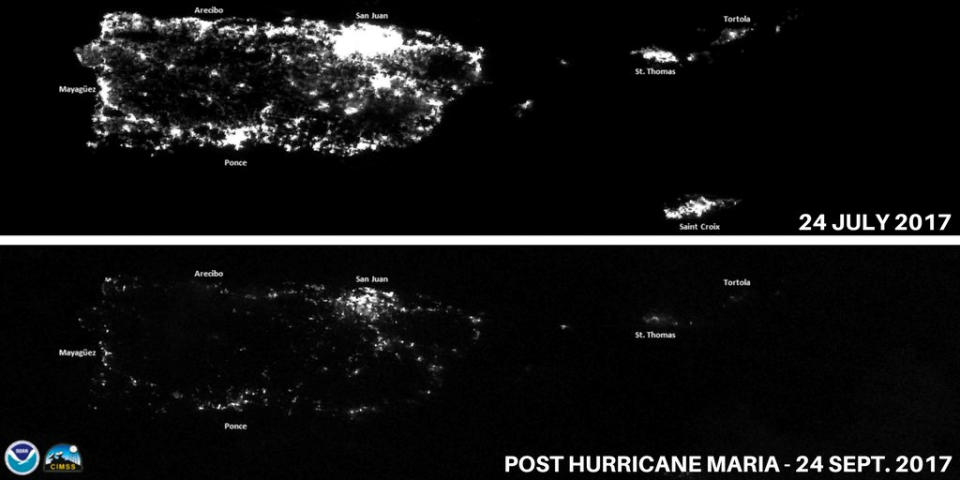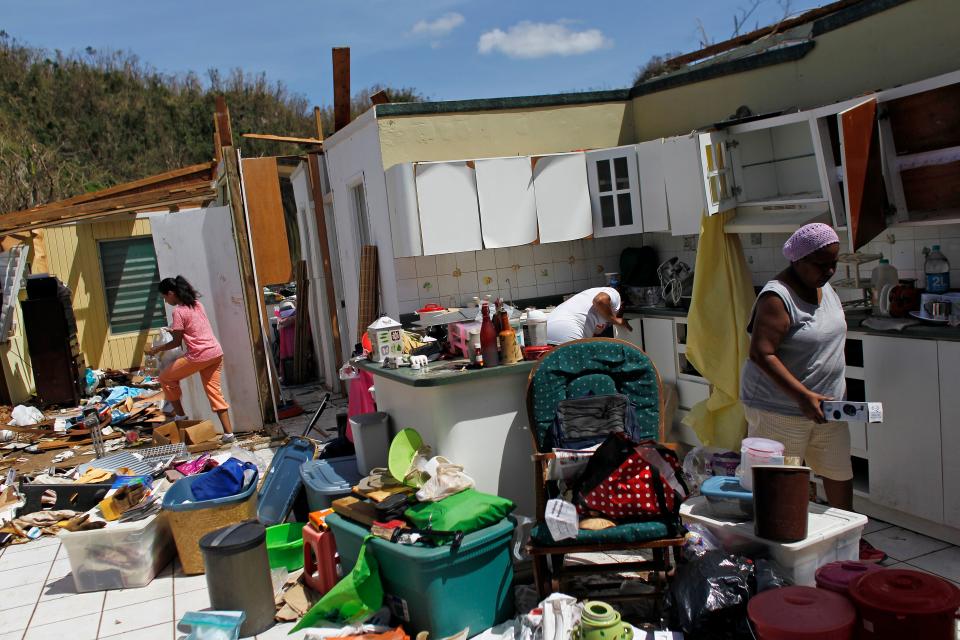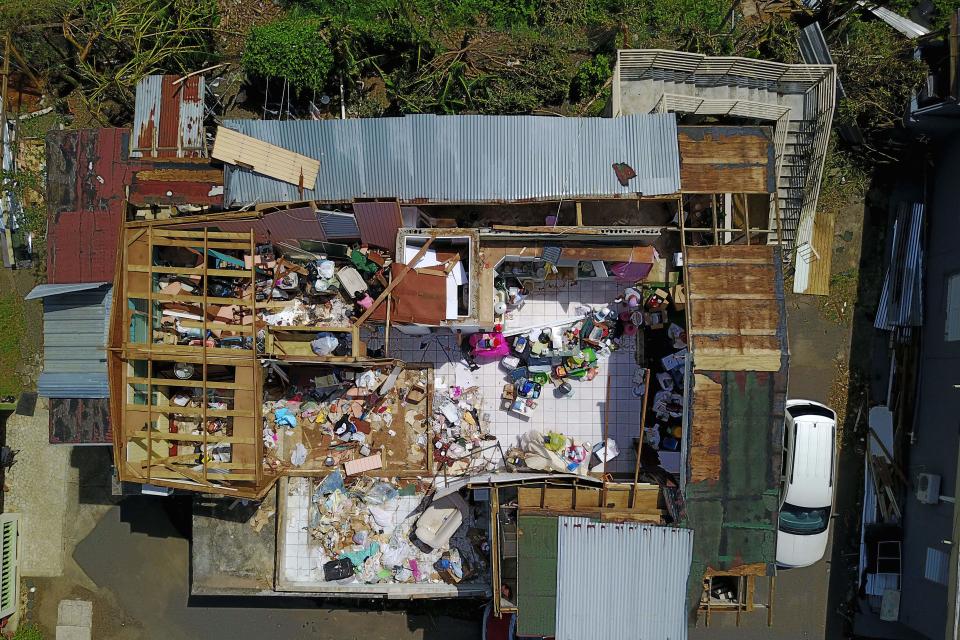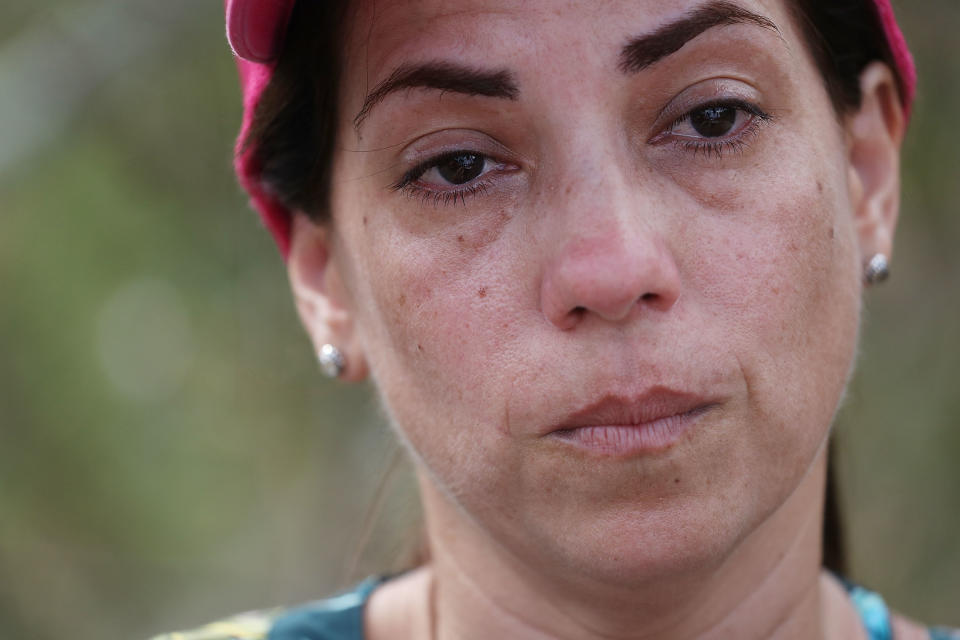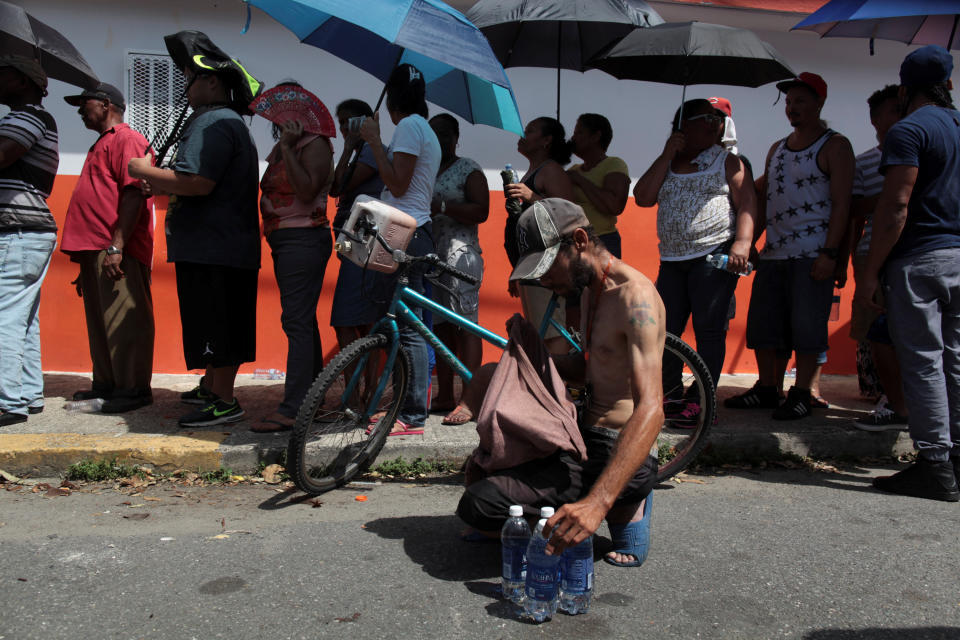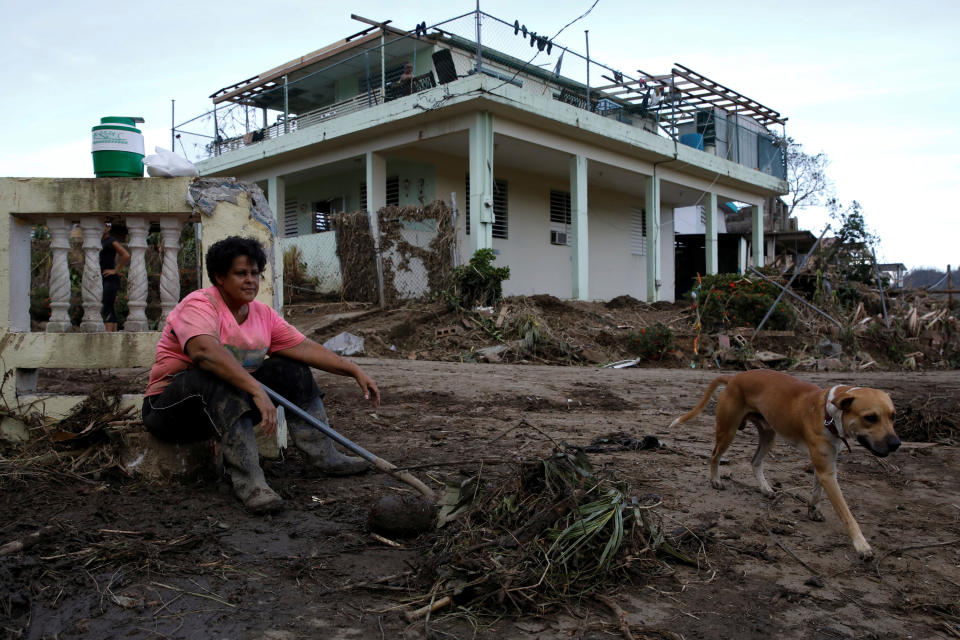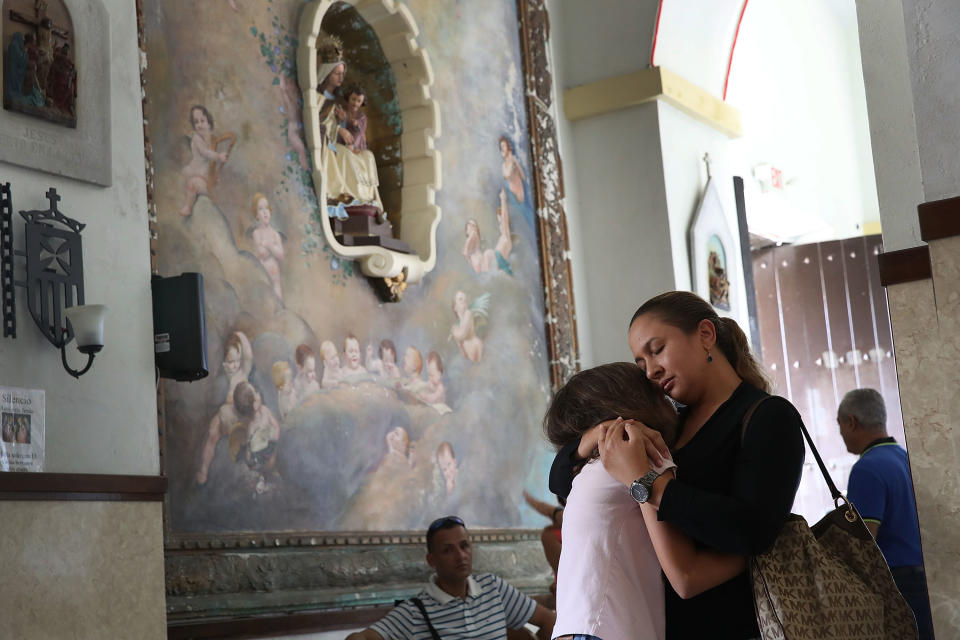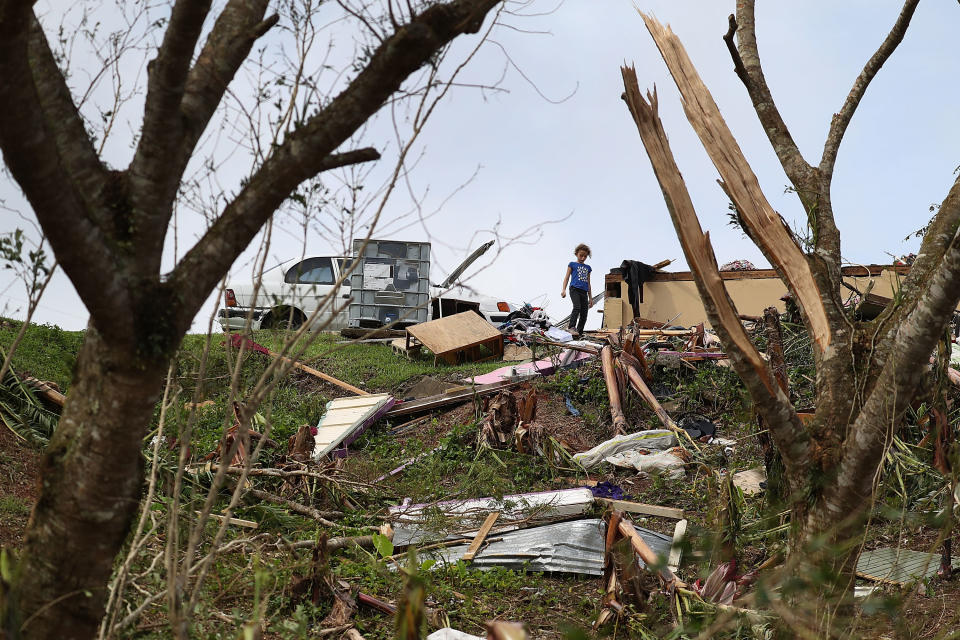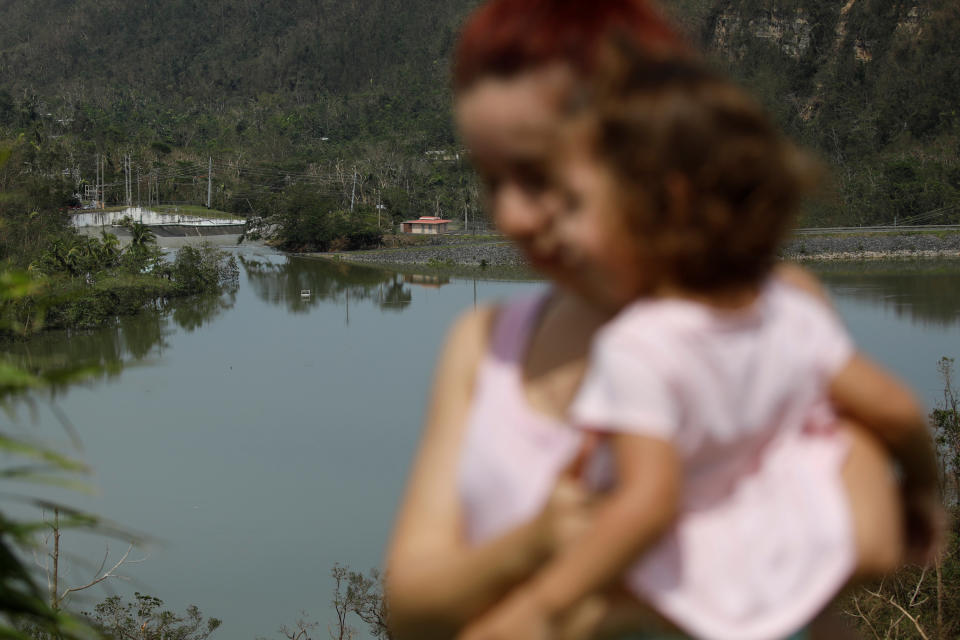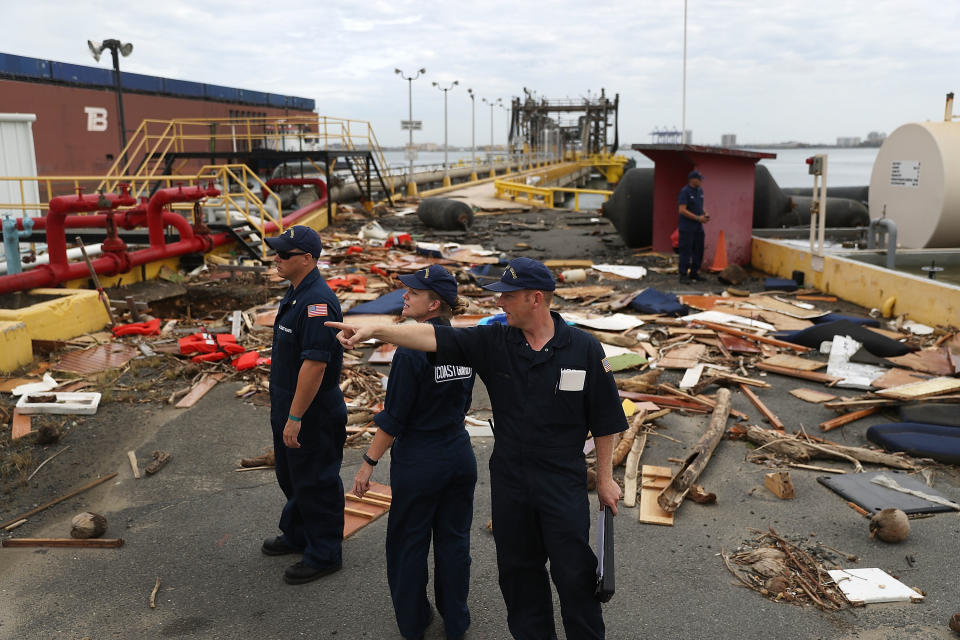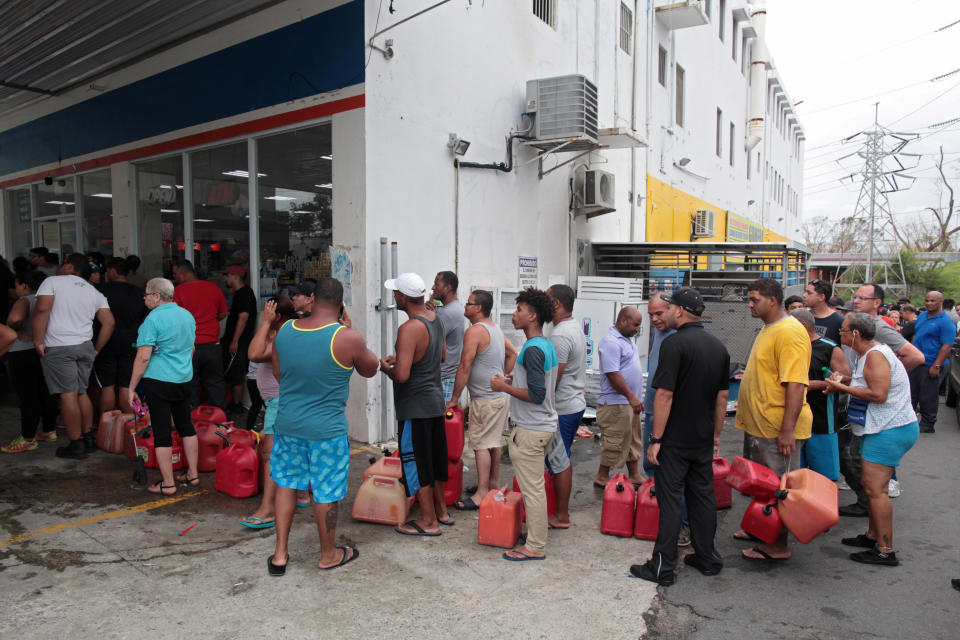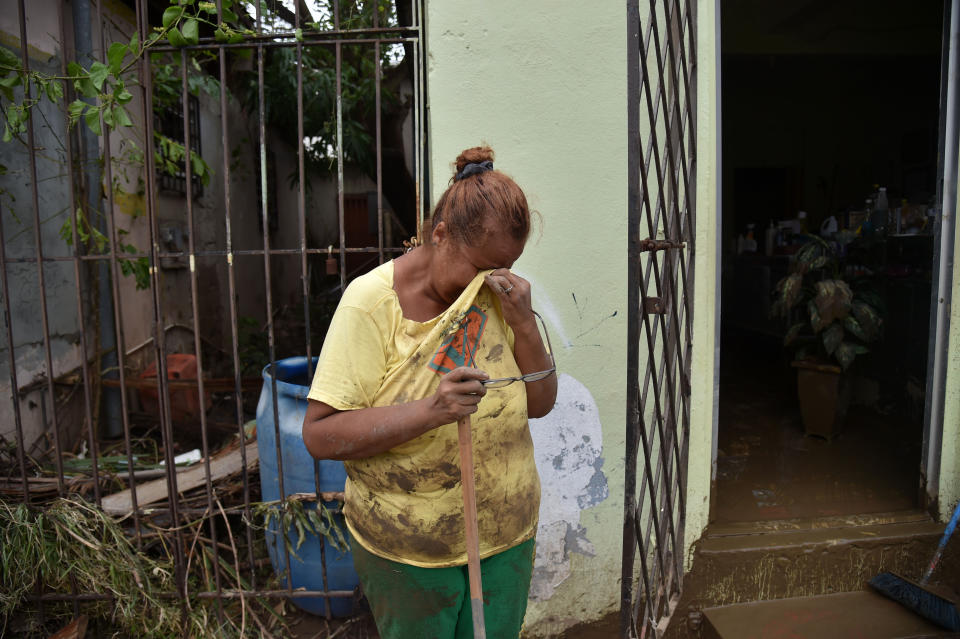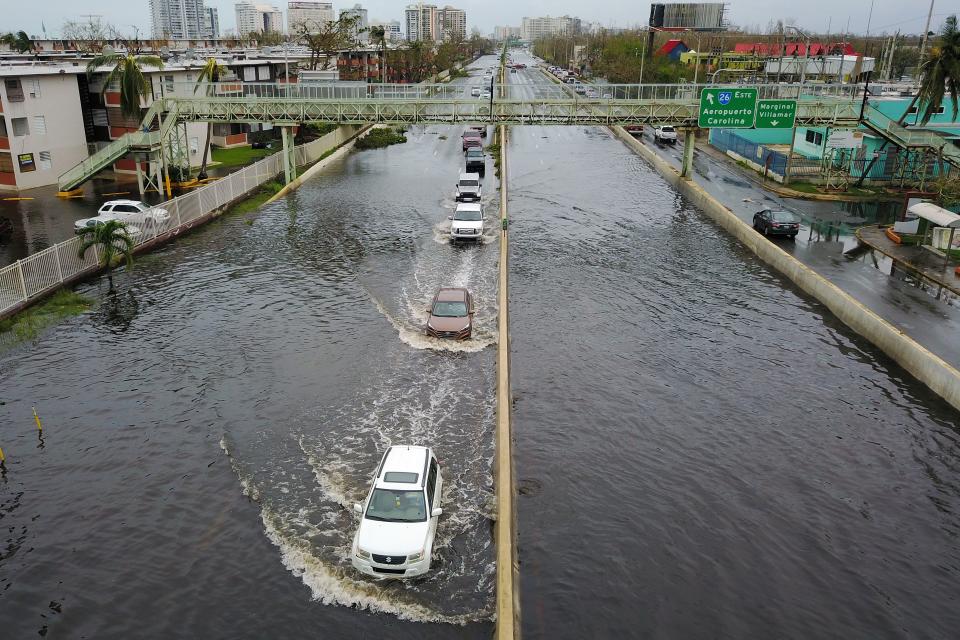#10 of 10 Most Popular News Galleries of 2017: Puerto Rico after Hurricane Maria
(Originally posted on October 12, 2017)
See the countdown of our most popular galleries of the year!
See the rest of our 2017 Year End features >>>
One man climbs 24 flights of stairs several times a day alongside dormant elevators. Street vendors hawk plastic washboards for $20. And families outstretch their hands as crews in helicopters drop supplies in communities that remain isolated.
This is life one month after Hurricane Maria slammed into the U.S. territory on Sept. 20 as a Category 4 storm that killed at least 48 people, destroyed tens of thousands of homes and left tens of thousands of people without a job. It was the strongest hurricane to hit Puerto Rico in nearly a century, with winds just shy of Category 5 force.
“I’ve never seen anything like this,” retired schoolteacher Santa Rosario said as she scanned empty shelves at a supermarket in the capital of San Juan that had run out of water jugs — again.
Maria caused as much as an estimated $85 billion in damage across an island already mired in an 11-year recession. That has complicated and delayed efforts to restructure a portion of a $74 billion public debt load that officials say is unpayable. And it has thrust Puerto Rico’s territorial status into the international spotlight, reviving a sharp debate about its political future as the island attempts to recover from flooding, landslides and power and water outages.
Maria has also put Puerto Rico into the U.S. political spotlight with President Donald Trump on Thursday giving himself a “10” for his response to the devastation wrought by the hurricane. Asked when the 3.4 million U.S. citizens living there could expect power to be fully restored, Trump said it will take “a while.”
“There’s never been a case where power plants were gone,” Trump said, seated alongside Gov. Ricardo Rossello in the Oval Office. “So it’s going to be a period of time before the electric is restored.”
Roughly 80 percent of power customers remain in the dark, and another 30 percent are without water. Schools remain closed. Stoplights are not operating. And while nearly 90 percent of supermarkets have reopened, many have bare rows of shelves empty of goods ranging from water to bananas to canned tuna. (AP)
See more news-related photo galleries and follow us on Yahoo News Photo Twitter and Tumblr.

